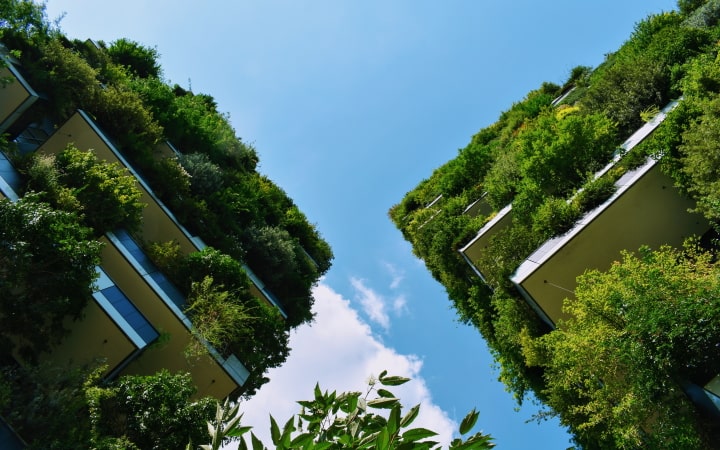
Eco Home
Table of Contents
We should be building forever when we build, not only for present delight or present use alone but for our descendants. Building a house of good quality and with eco material will secure the future for its users in two ways-they will have a home, and that home will be environmentally friendly.
What is EcoHomes
EcoHomes is an environmental rating scheme for homes in the United Kingdom. It is the domestic version of the Building Research Establishment’s Environmental Assessment Method BREEAM, which can also be applied to various non-residential buildings. The Code replaced it for Sustainable Homes in April 2007.
EcoHomes can be applied to new private and social housing schemes and the case of major refurbishment. Special assessments can be made of communal housing such as student halls of residence and care homes. EcoHomes was first developed and used commercially in 2000. EcoHomes Assessments fall under one of four versions, Pre-2002, 2003, 2005, or the current version 2006.

The rating system has gone through four major revisions, EcoHomes 2006. Consequently, it is not possible to compare homes built under one modification of the standard with homes built under another.
Green building (also known as green construction or sustainable building) refers to a structure using a process that is environmentally responsible and resource-efficient throughout a building’s life-cycle: from siting to design, construction, operation, maintenance, renovation, and demolition. This practice expands and complements the classical building design concerns of economy, utility, durability, and comfort.
Eco Home and Ecology
Ecological footprint (EF) analysis determined whether so-called eco-living in Sweden differs from conventional living. The study involved two elements: (1) calculations of material and energy needs for constructing an eco-house in Toarp and a standard house in Oxie, southern Sweden; and (2) EF analysis of household consumption patterns from Toarp and Oxie. A difference of only 10% was observed in comparing the building materials between the two houses. Building materials represent less than 5% of the annual EF in Toarp and Oxie. There was no significant difference in the EF between the two towns. The average yearly EFs are 2.8 ha per person and 3.7 ha per person in Toarp and Oxie, respectively. Food consumption and energy consumption for housing (space heating and electricity use) are the largest contributors to the EF in Toarp and Oxie. These factors are almost equal in size and constitute 75% of the total EF in Toarp and Oxie.

To use fly ash and coal waste effectively, the current technologies for reprocessing and recycling these wastes into eco-building materials were reviewed, such as utilizing fly ash as:
- The component of fly ash cement and low heat cement after the processes of separation;
- Removal of carbon remains and fine comminution;
- Calcining coal waste into kaolin and meta-kaolin with suspension technology;
- Preparing clinkers alkali-activated geopolymer materials with fly ash and meta-kaolin.
The instances of sustainability in building construction have produced some particularly interesting research both at the level of “production” of architecture and at the level of “evaluation” of the technical solutions proposed.
New Eco-Home Building Standards
Sensitivity towards environmental problems seems to have reached the conscience of users and those working in the building sector; however, it is proving hard to achieve an effective new approach to planning.
But how can this new conscience be “built-up”? The notes follow we are the synthesis of a study that is underway concerning an approach to planning that is aware of environmental criticality and indications to make more sustainable choices.
The test is applied to a case study of the wealth of mud and earth buildings in the Abruzzo region. In particular, reflections are made:

a) to set out a planning method that moves from a careful analysis of the possibilities offered by the environment in terms of stratified building culture and awareness of physical phenomena.
A reading of tradition provides a wide repertory of solutions that should, in any case, be carefully evaluated, adapted, and developed, in a word, put into practice. Then they should adapt it to contemporary needs, making the best use of the knowledge of the technology of materials, physical technique, and physiology.
b) to hint at the instruments to achieve the aim of sustainable development (economic and social) – through self-construction (limited only to cases of rebuilding or restoration) or industrial production – that takes into account the environmental questions.
c) to layout a test that can be applied in a minimum module, emblematic of the paradigm of the technical and environmental appropriateness of a dwelling system concerning a determined physical-climatic context.

Live in Harmony With Nature
Learning to build & live sustainably becomes more popular and more pressing every day. Buildings spend 40% of the world’s total energy & 16% of water usage. It is of the greatest importance to reduce emissions and prevent even worse climate change consequences. The building needs to be on such a level that great quality buildings are built, and that environment is protected.
